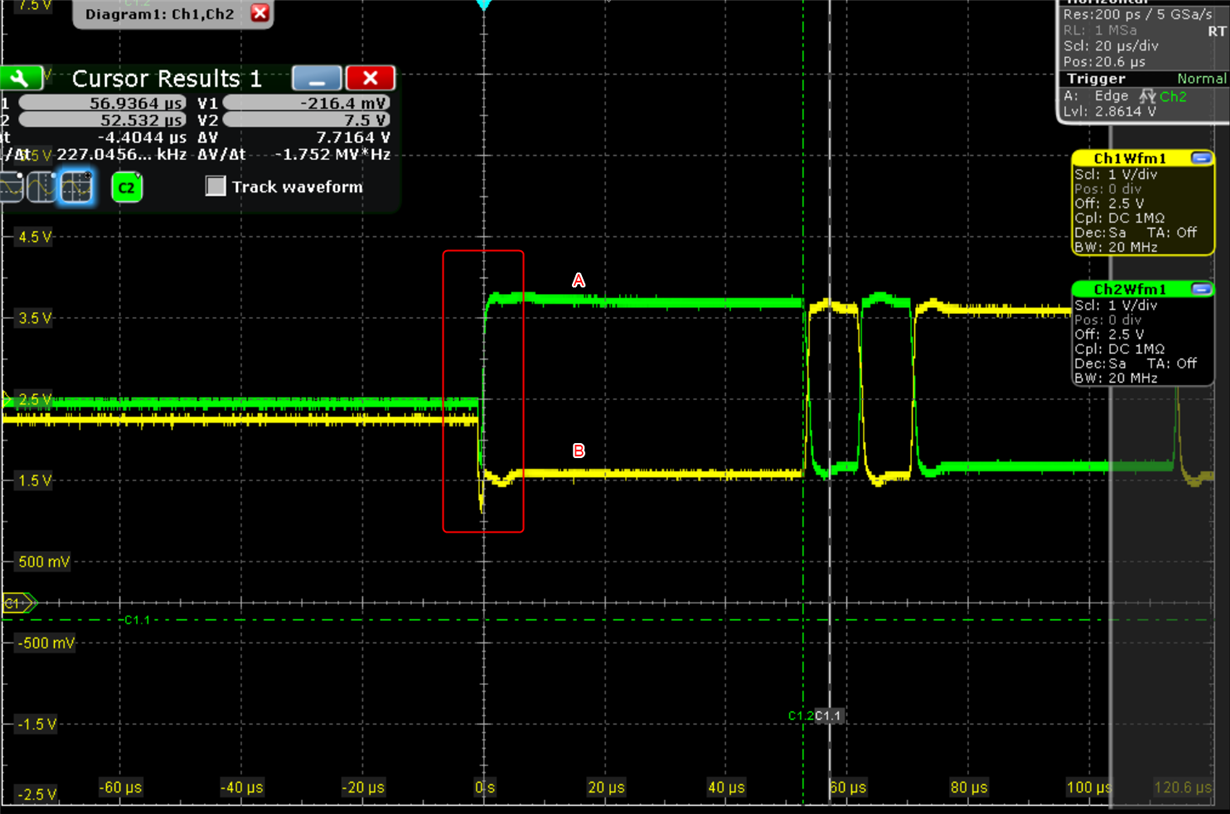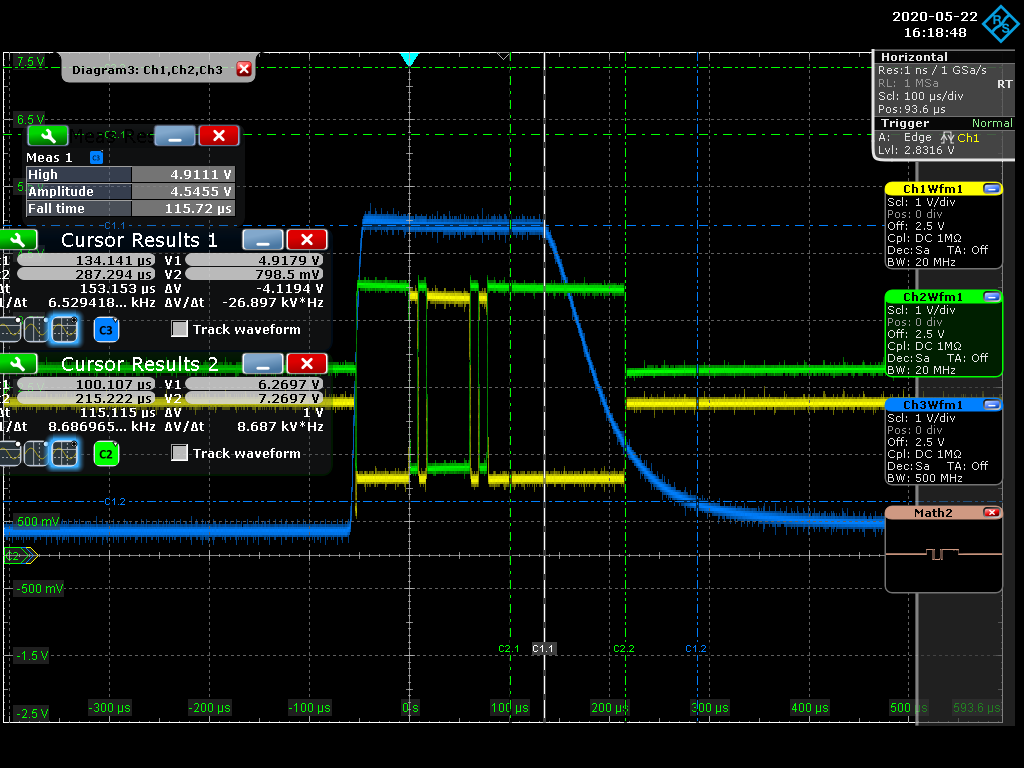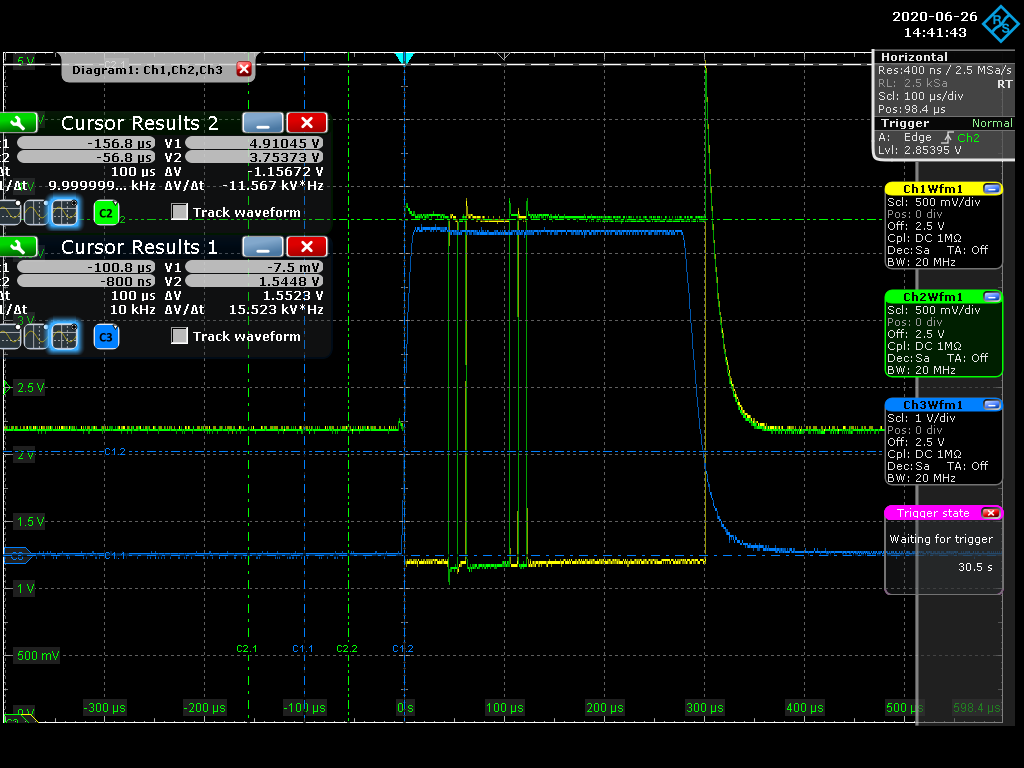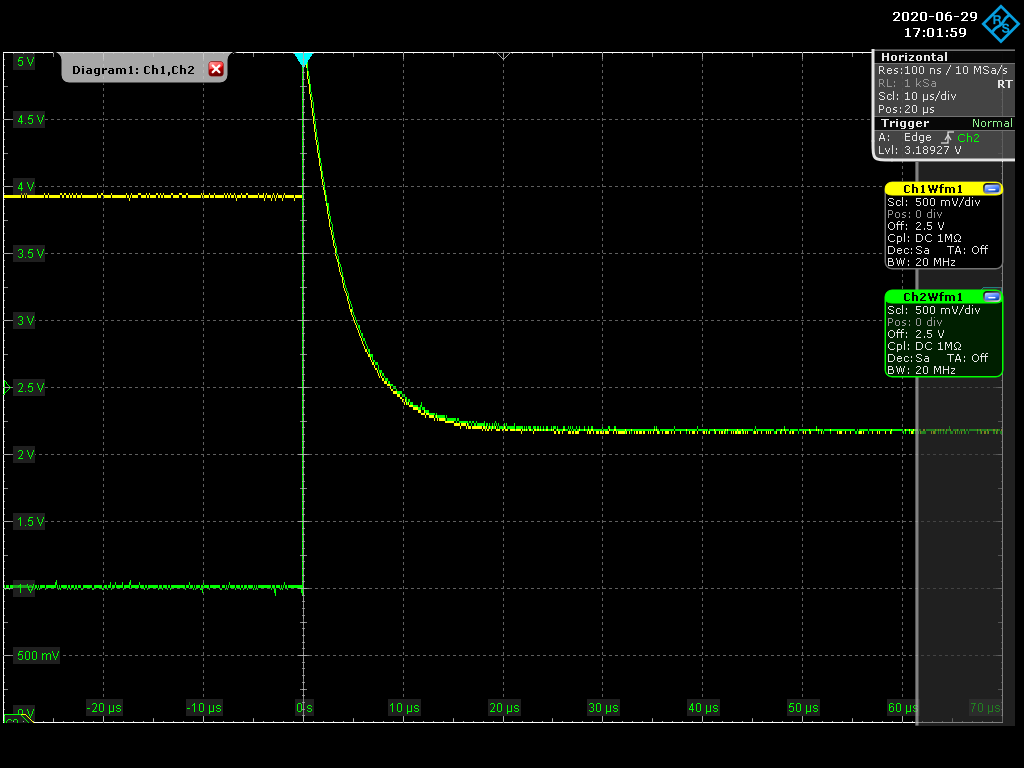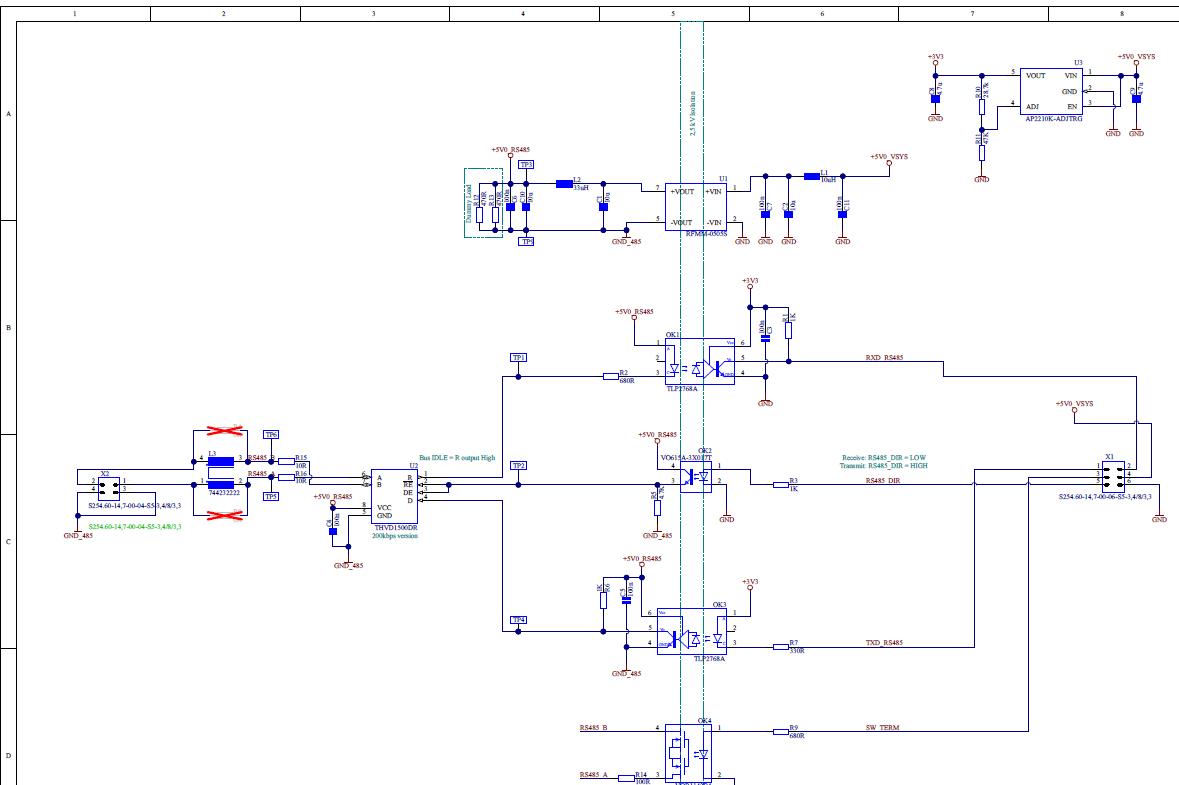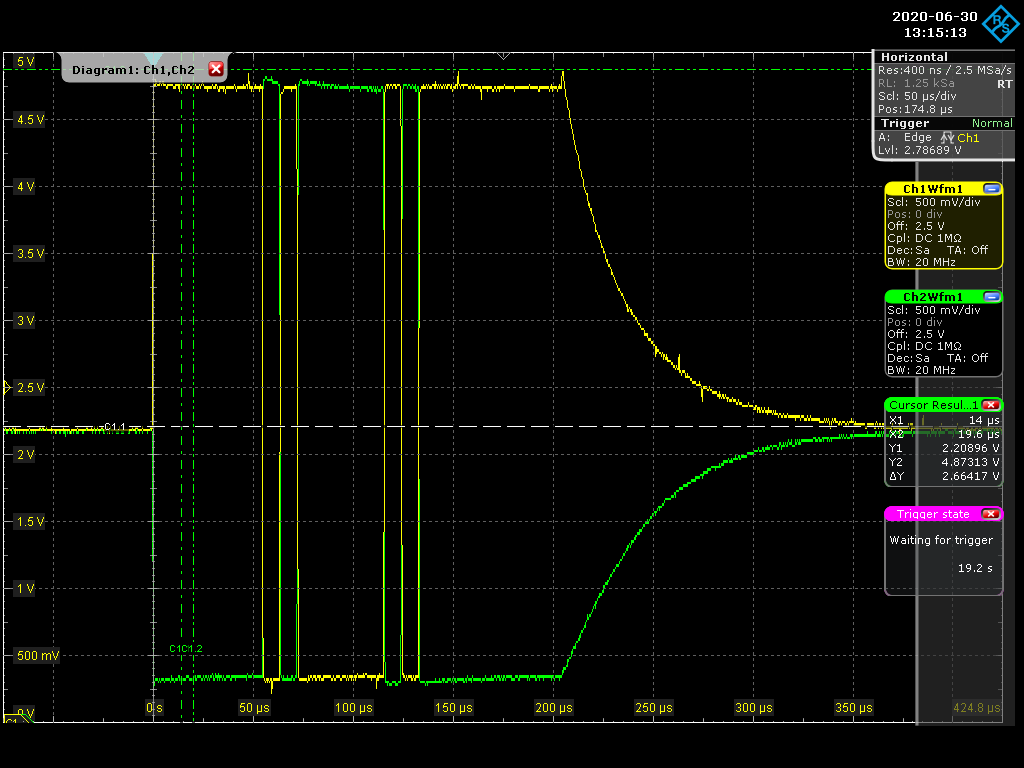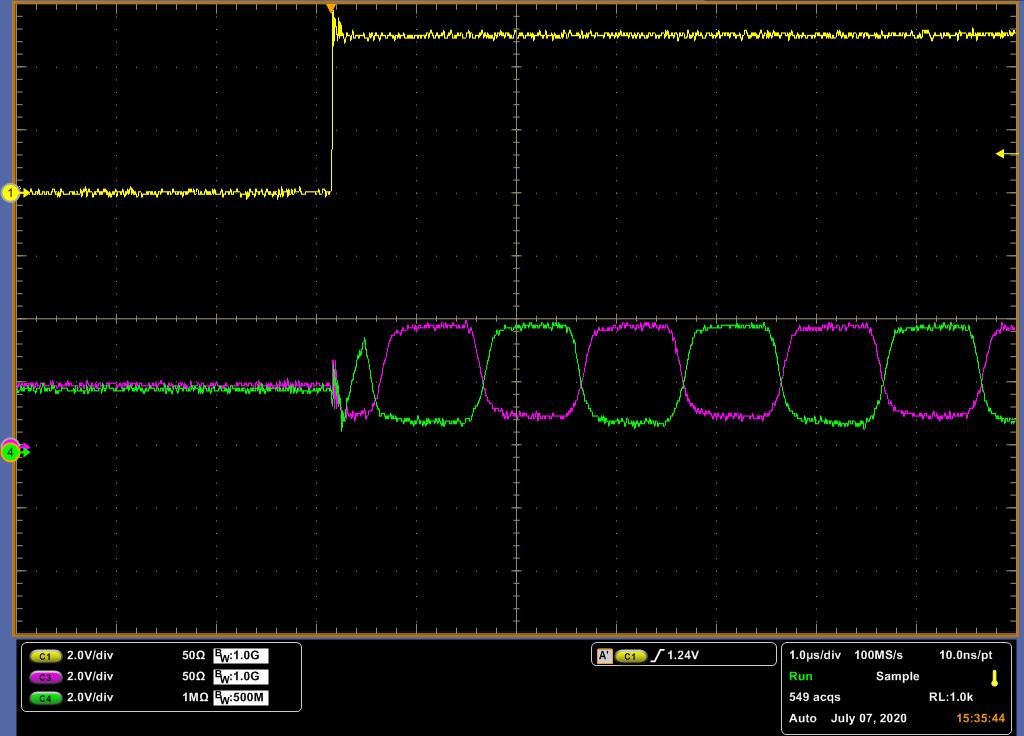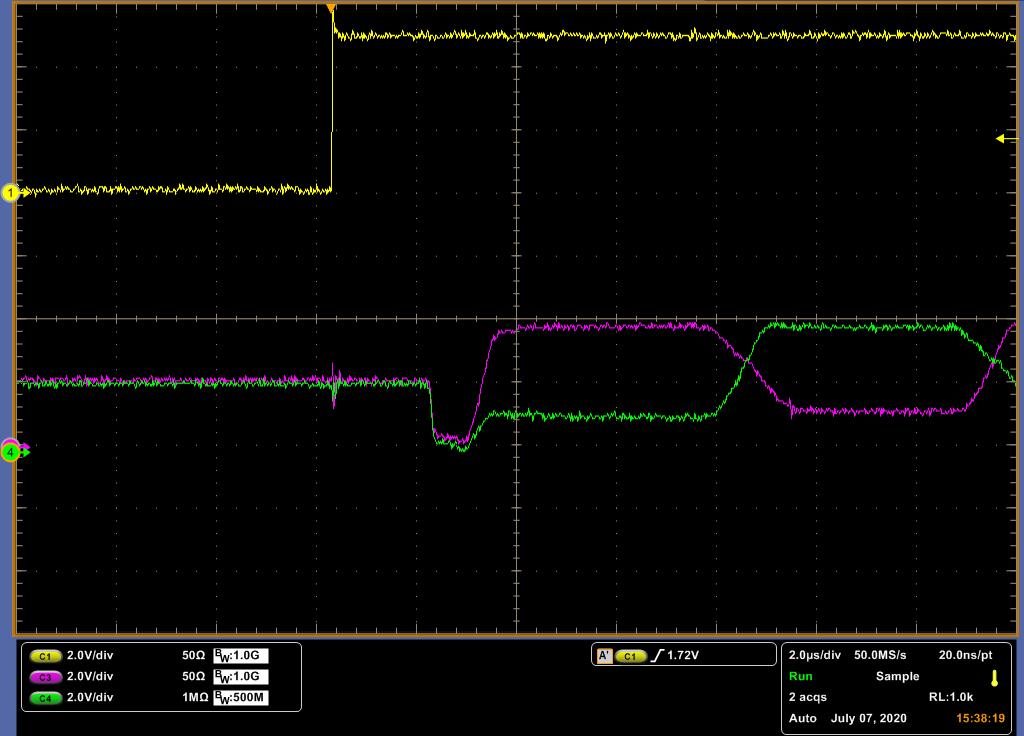Other Parts Discussed in Thread: THVD1500,
Hello,
while enable the transmitter of the SN65HVD3082EDR there is an undershoot of A and B signals. It does not really affect the communication but i don't see this when i use a RS485 Transceiver from another Manufacturer.
The RE and DE Pins are connected together so the receiver is switched off while the transmitter is enabled. I also tried a 10k resistor between the control GPIO and \RE Pin. DE was connect directly with the control GPIO.
Does anyone have an idea what it could be?
Best Regards
Artur


